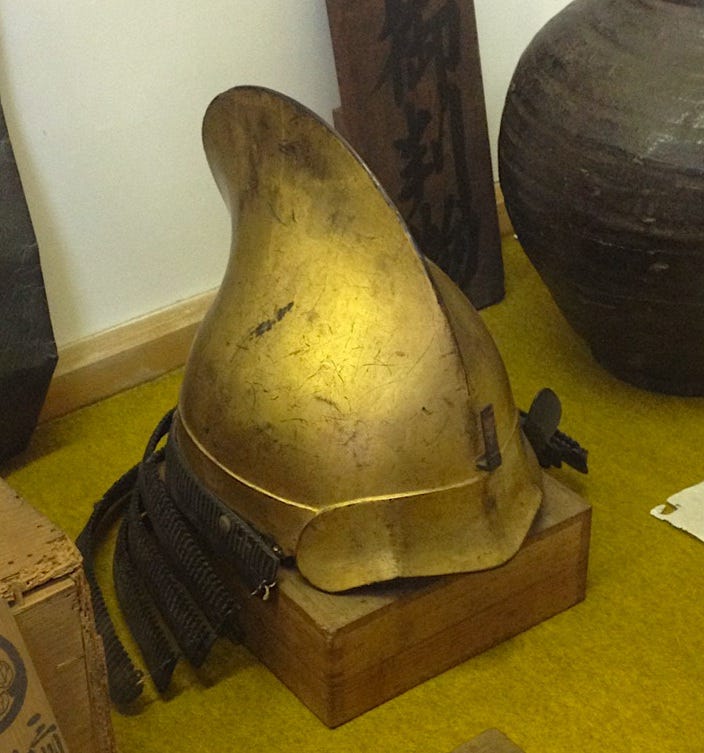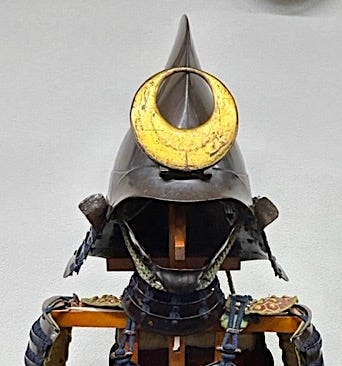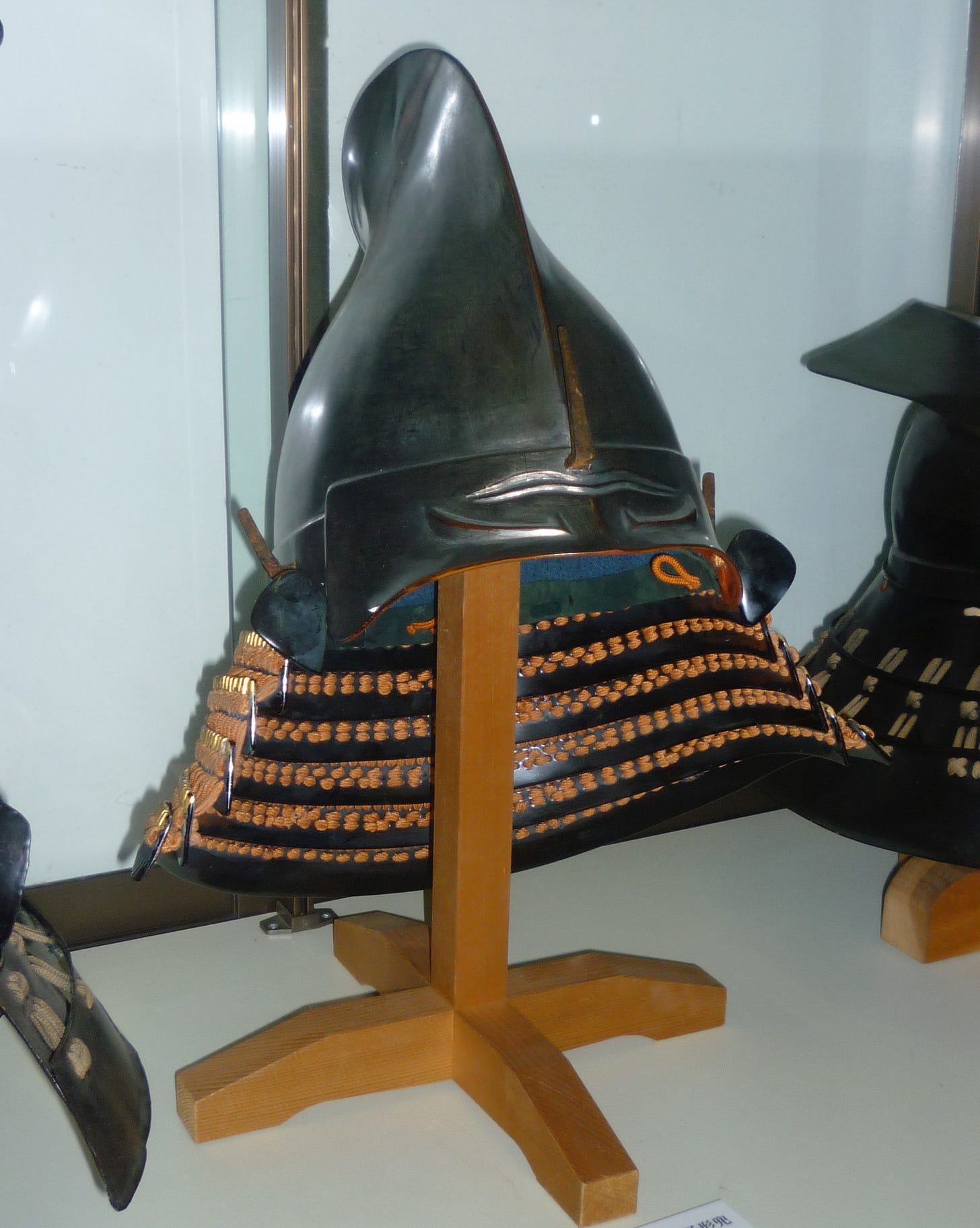During the Heian Period, being seen without headwear was considered a shameful thing, and so hats or caps known as eboshi were worn at all times during waking hours. Eboshi, and their derivatives, continued to be worn by the samurai — particularly the elite — until the end of the Edo period. The traditional high standing, swept back and rounded eboshi is particularly noted as being a nobleman’s court cap.
Made of lacquered cloth or even a soft gauze with a black, or more often a white cloth tie band, Eboshi were sometimes worn folded flat under kabuto helmets too. It was considered a grave insult to touch, let alone knock an eboshi off anyone’s head. Eboshi, and derivatives of the caps continued to be worn by the samurai, particularly the elite until the end of the Edo period.
The caps also influenced a particular type of samurai kabuto, known as the Eboshi-nari Kabuto, that were developed in the mid to late Sengoku (Warring States) period. As the same suggests, the elegant looking helmet is constructed to resemble an aristocrats’ court cap. Eboshi shaped helmets were usually similar in make to the peach-shaped momo-nari helmets with built up peaks of two to four plates of hammer shaped steel plate, but often lacquered paper or leather.
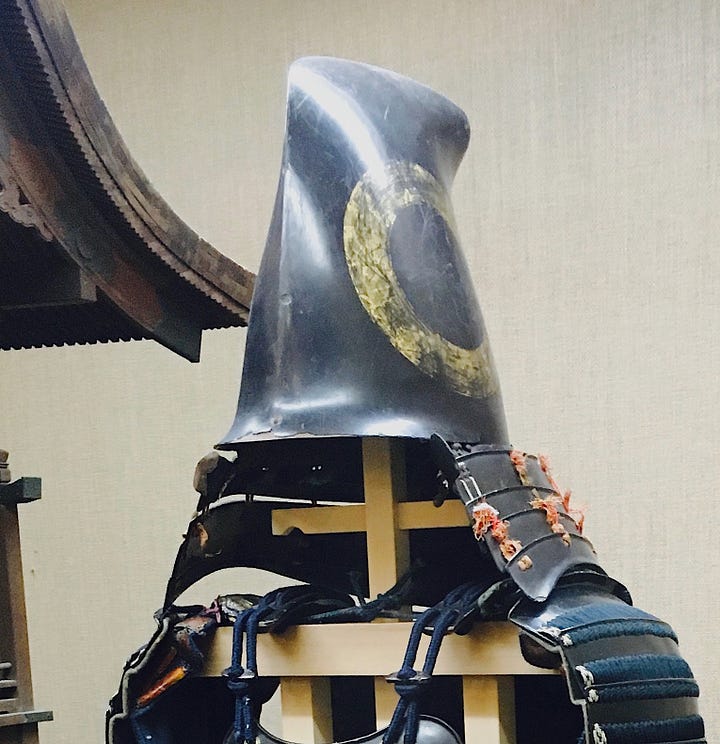

In some cases, Eboshi Nari kabuto were based on a standard zunari kabuto, with the court cap shape being formed of either hammered steel, laminated urushi lacquered rawhide leather or even thick washi paper, and then fitted and attached over the top of the zunari. These constructions were known as a harikake-kabuto, or “pasted” helmets.
The kachushi, armour craftsmen made these helmets with either two, or four carefully cut plates for the helmet bowl that were then hammered into a rounded, tapering shape and connected together to form the distinctive appearance. A tousei-mabisashi, front visor plate, or in the case of older types, a separate tsubo type visor was fitted on top of that, and koshimaki no ita, literally, a girdle plate, around the base. This carried the fukigaeshi, the iconic ear shaped flanges on a samurai helmet. To that was fitted the typical concertina-type Japanese shikoro neck guard. The surface of the bowl was coated with urushi lacquer, or in some cases, a rust like patina was created.
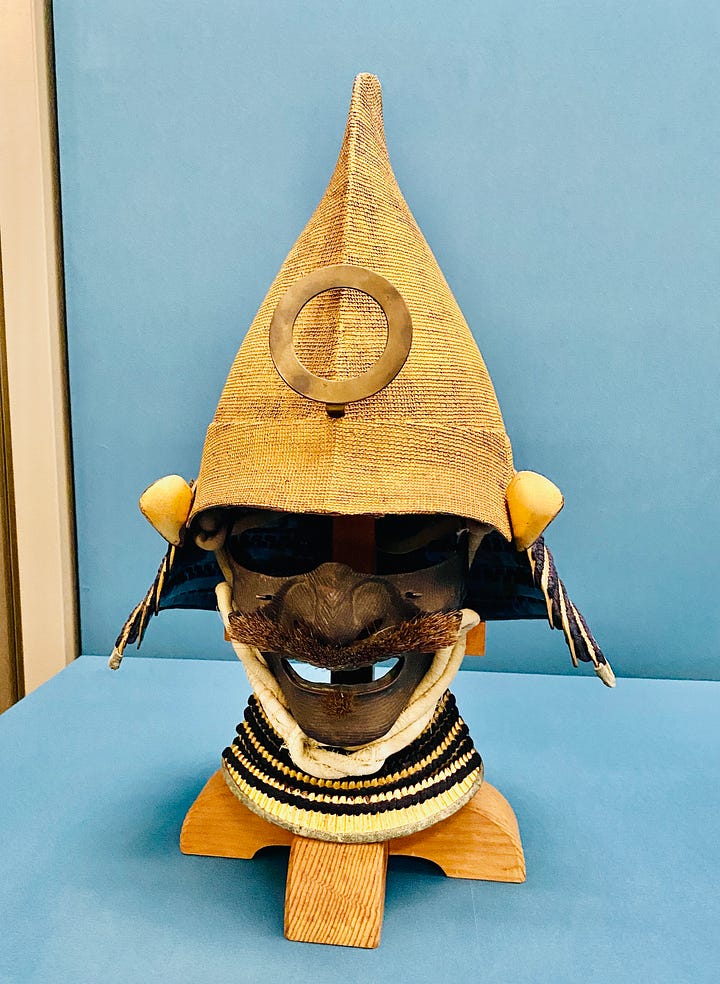
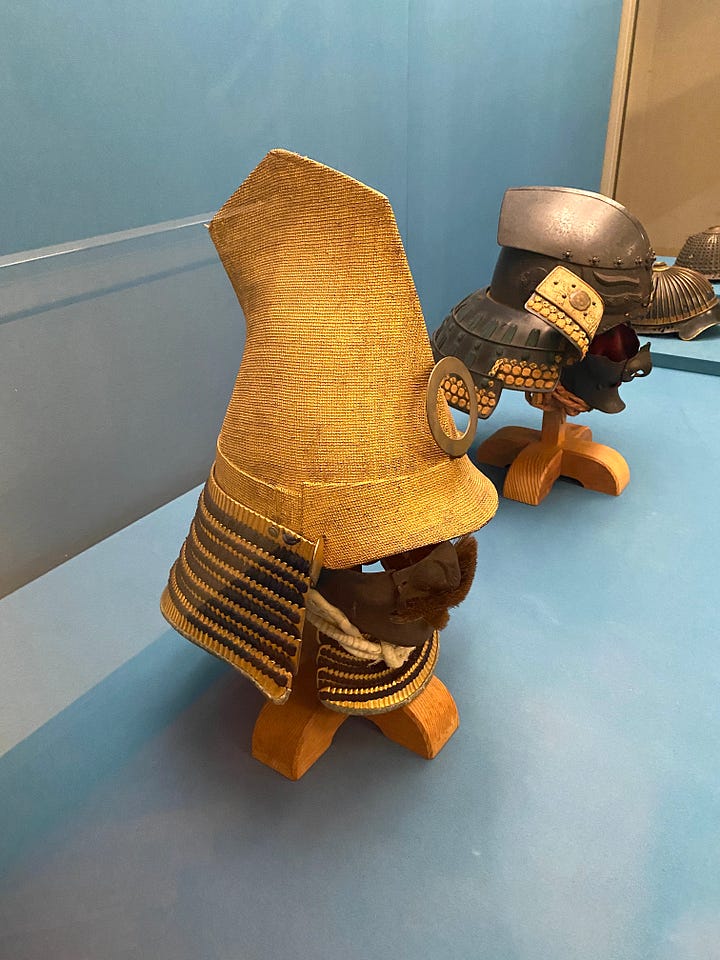
The dark brown urushi lacquered helmet seen below is from my personal collection. This is a very standard example of a Sengoku (Warring States) period eboshi kabuto. A medium height helmet with a twin pronged tsuno-moto crest or maedate holder. Note the tsubo type visor fitted over the front plate that in later versions becomes the mabisashi. It features a five ring shikoro neck guard with dark blue lacing.

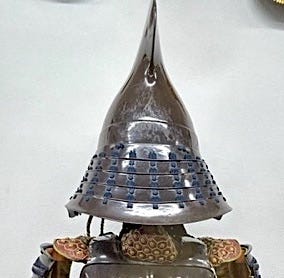
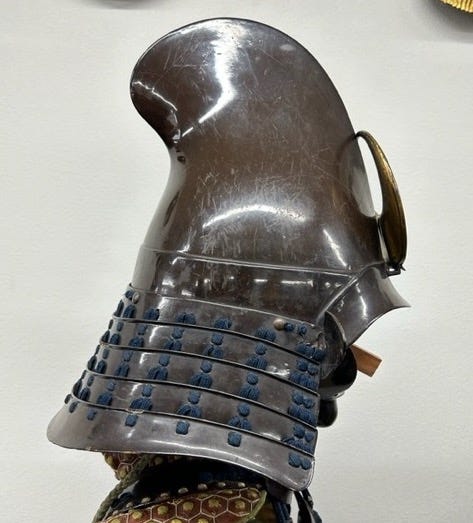
Yet another style was known as the Naga Eboshi — very long, elongated Eboshi — helmet. These were usually similar in make to to Momo Nari Helmets with built up "towers" of two plates of steel, but to cut cost and weight, were also made using lacquered paper or leather. Naga eboshi-nari Kabuto were difficult to fight in, and their distinctive style, although adding majesty, made the wearer an easy target on the battlefield. A similar type of helmet is the Namazu O Kabuto, or Catfish Tail Helmet, a more upright design without the graceful curves associated with the eboshi type. Kato Kiyomasa is famed for having worn a taller version naga-eboshi-nari kabuto.
Oda Hidenobu's kabuto, worn at the time of the 1600 attack on Gifu Castle, prior to the Battle of Sekigaharawas this eboshi kabuto and features gold leaf along the top edges of the shikoro and purple ito-odoshi lacing. From the tsunomoto crest posts it appears to have once supported a long lost maedate (forward crest) and wakidate, or side mounted decorative crest devices. This helmet remains the property of the Entoku-Ji Temple, Gifu City.
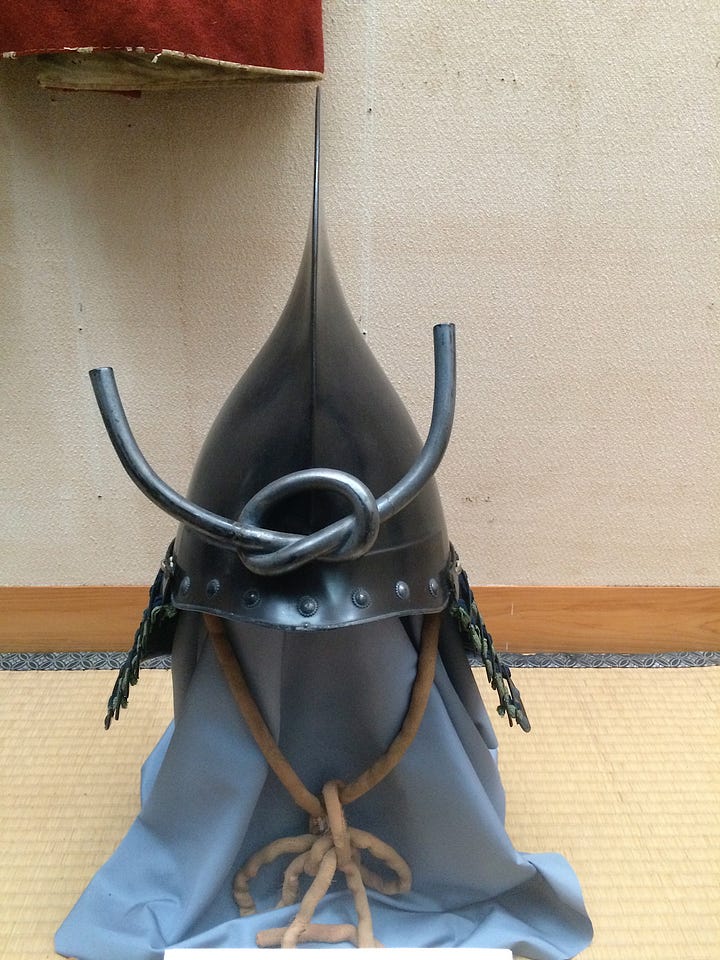
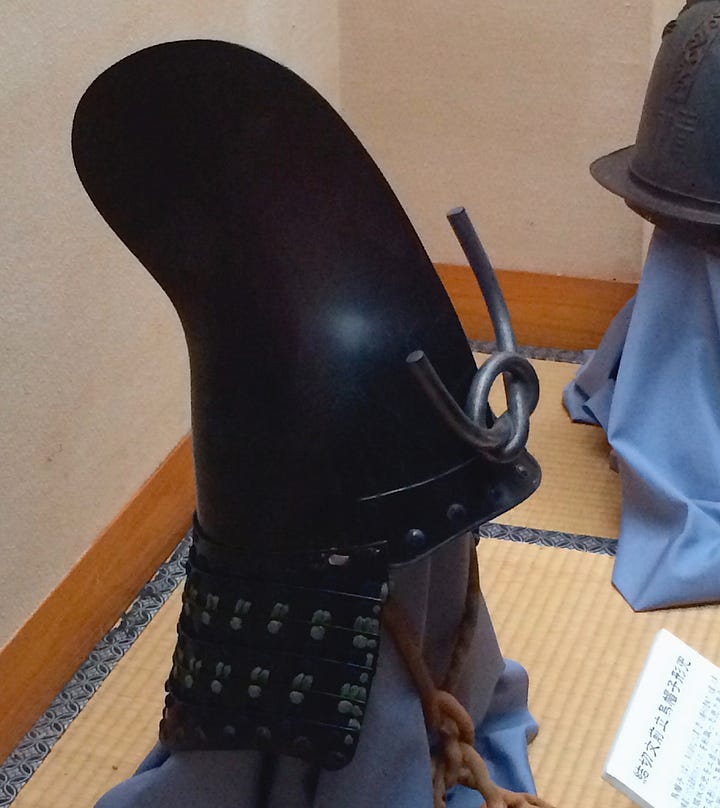
Maeda Toshiie and Mori Motonari are said to have worn Eboshi Nari Kabuto.Yamauchi Kazutoyo was known to have worn an Eboshi-nari kabuto with a very low crown.
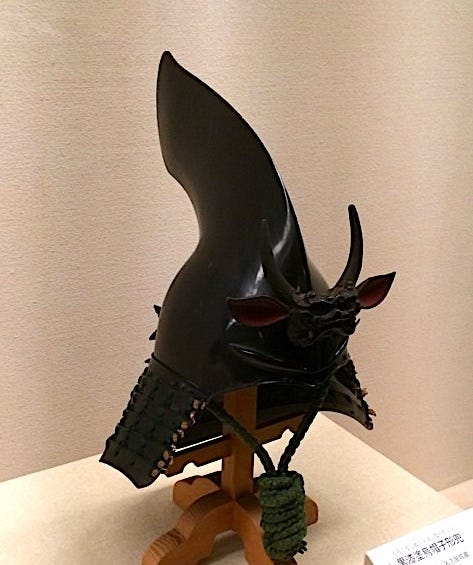
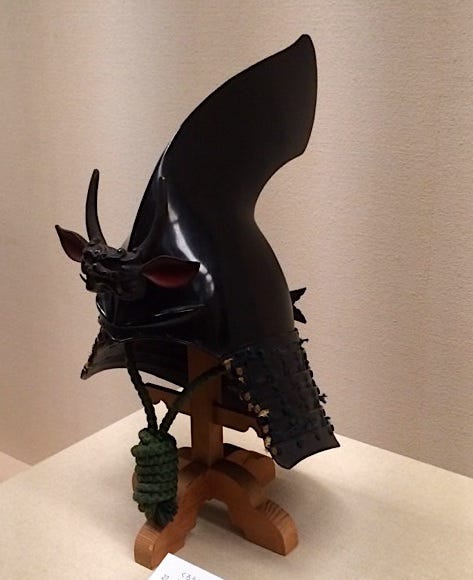
Helmets in the form of the aristocrats’ court cap were popular in the Sengoku period. The simplicity of realization and the elegance of the shape was certainly a determining factor for the spread of this type of kabuto.




